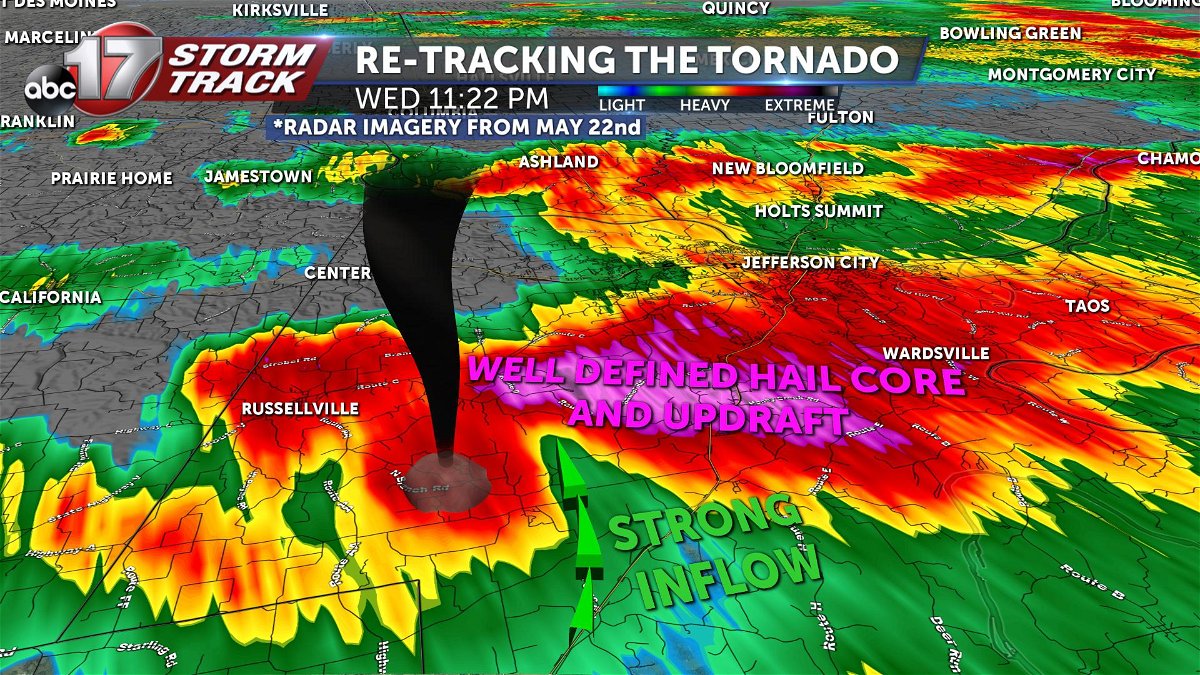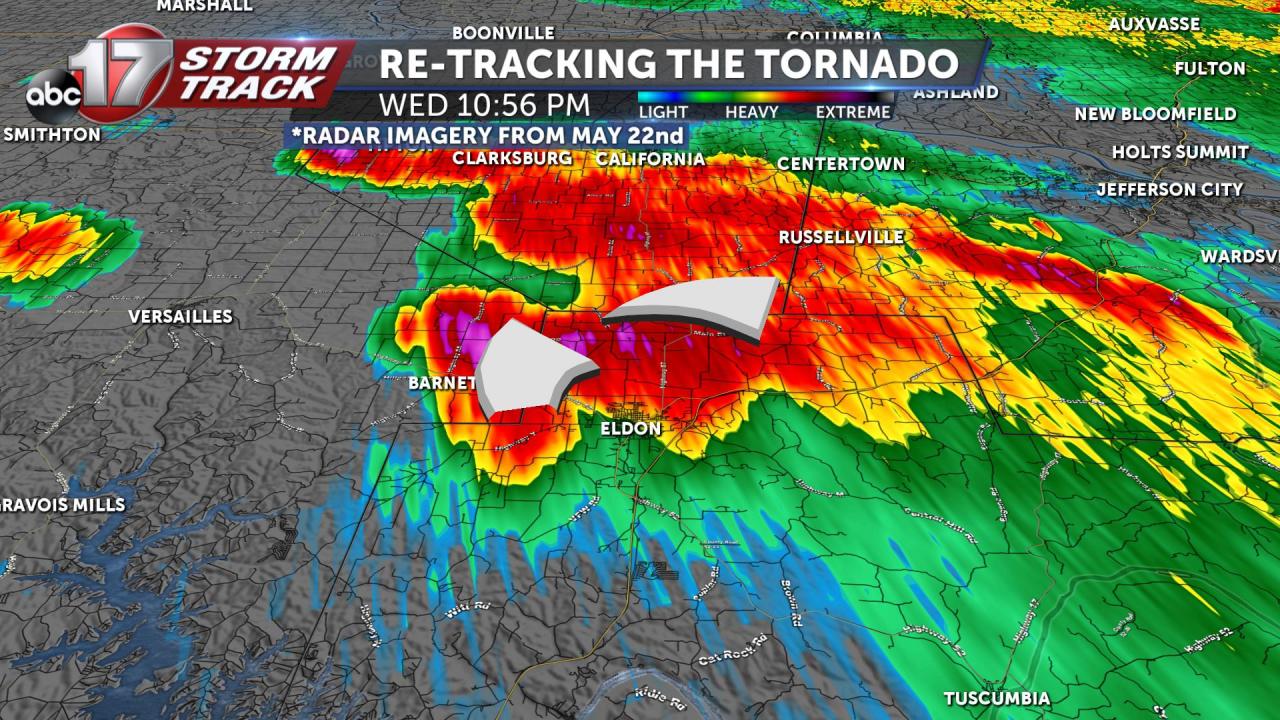
Step into the realm of tornado tracking, where technology meets nature’s fury. Tornado Tracker, an indispensable tool for meteorologists and disaster preparedness teams, empowers us to understand, predict, and mitigate the destructive force of tornadoes.
From its inception to its cutting-edge advancements, this comprehensive guide delves into the fascinating world of tornado tracking, unraveling its complexities and highlighting its invaluable contributions to public safety and scientific research.
Tornado Tracker Fundamentals

Tornado trackers are essential tools for detecting and tracking tornadoes, providing valuable information to meteorologists, emergency responders, and the public. These devices use advanced technology to monitor weather conditions and identify potential tornado activity, helping to mitigate the risks associated with these dangerous storms.
There are various types of tornado trackers available, each with its own unique features and capabilities. Doppler radar, for instance, is widely used by meteorologists to detect and track tornadoes by analyzing the velocity and direction of wind currents. Mobile tornado trackers, on the other hand, are designed for field use, providing real-time data on tornado activity to emergency responders and storm chasers.
Advantages of Using a Tornado Tracker
- Early detection of tornadoes, allowing for timely warnings and evacuations
- Improved accuracy in predicting tornado paths and intensities
- Enhanced situational awareness for emergency responders and storm chasers
- Real-time data for weather forecasting and research
Disadvantages of Using a Tornado Tracker
- Can be expensive to purchase and maintain
- Requires trained personnel to operate and interpret data
- May not be effective in all weather conditions, such as heavy rain or hail
- Can provide false alarms in some cases
How Tornado Trackers Work
Tornado trackers rely on a combination of technologies to detect and track tornadoes. Doppler radar, the most common type of tornado tracker, emits radio waves that bounce off objects in the atmosphere. By analyzing the reflected signals, meteorologists can determine the velocity and direction of wind currents, which helps them identify areas of rotation that may lead to tornado formation.
Mobile tornado trackers, such as those used by storm chasers, often use a combination of radar and GPS technology. These devices can detect changes in wind speed and direction, as well as atmospheric pressure, which can indicate the presence of a tornado.
Some mobile tornado trackers also use cameras to capture images of tornadoes, providing valuable data for research and analysis.
Accuracy and Reliability of Tornado Trackers
The accuracy and reliability of tornado trackers vary depending on the type of technology used and the conditions under which they are deployed. Doppler radar is generally considered to be the most accurate method of tornado detection, with a success rate of over 90%. Mobile tornado trackers, while less accurate than Doppler radar, can provide valuable real-time data in areas where radar coverage is limited.
Using Tornado Trackers Effectively
To use tornado trackers effectively, it is important to understand their capabilities and limitations. Doppler radar, for instance, is best suited for large-scale tornado detection and tracking, while mobile tornado trackers are more useful for field operations and real-time data collection.
Proper installation and maintenance are crucial for ensuring the accuracy and reliability of tornado trackers. Doppler radar systems should be calibrated regularly to ensure optimal performance, while mobile tornado trackers should be regularly checked for any damage or malfunction.
Interpreting Tornado Tracker Data
Interpreting the data provided by tornado trackers requires training and experience. Meteorologists use a variety of techniques to analyze radar data, including identifying areas of rotation, tracking storm movement, and estimating tornado intensity. Mobile tornado trackers provide more limited data, but can still be useful for identifying potential tornado activity and providing early warnings.
Tornado Tracker Applications

Tornado trackers are used in a variety of settings, including:
- Weather forecasting:Meteorologists use tornado trackers to monitor weather conditions and issue tornado warnings and watches.
- Emergency response:Emergency responders use tornado trackers to track the movement of tornadoes and provide real-time updates to the public.
- Storm chasing:Storm chasers use tornado trackers to locate and observe tornadoes, providing valuable data for research and education.
- Research and education:Tornado trackers are used by researchers to study tornado behavior and improve forecasting techniques.
Future of Tornado Trackers
The future of tornado trackers is bright, with emerging technologies and advancements promising to further improve their accuracy and reliability. Artificial intelligence and machine learning are being explored to enhance tornado detection and tracking algorithms, while new sensor technologies are being developed to provide more detailed data on tornado behavior.
As tornado trackers continue to evolve, they will play an increasingly important role in disaster preparedness and response, helping to save lives and protect property. They will also contribute to a better understanding of tornado behavior, leading to more accurate forecasting and early warnings.
Final Review

As the future of tornado tracking unfolds, we can expect even more groundbreaking advancements, driven by artificial intelligence and machine learning. These technologies hold the potential to revolutionize our ability to predict and respond to tornadoes, ultimately saving countless lives and protecting communities.
The relentless pursuit of knowledge and innovation in tornado tracking is a testament to our unwavering commitment to understanding and mitigating the forces of nature. By embracing these advancements, we empower ourselves to build a safer and more resilient society in the face of nature’s most formidable challenges.
Top FAQs
What is the purpose of a tornado tracker?
Tornado trackers are designed to detect, track, and provide early warnings of tornadoes, enabling timely evacuation and protective measures.
How do tornado trackers work?
Tornado trackers utilize advanced radar technology, Doppler shifts, and atmospheric data to identify and monitor the movement of tornadoes, providing real-time updates on their location and intensity.
Are tornado trackers accurate?
While tornado trackers are highly accurate, they are not foolproof. Factors such as terrain, weather conditions, and radar limitations can affect their accuracy.





